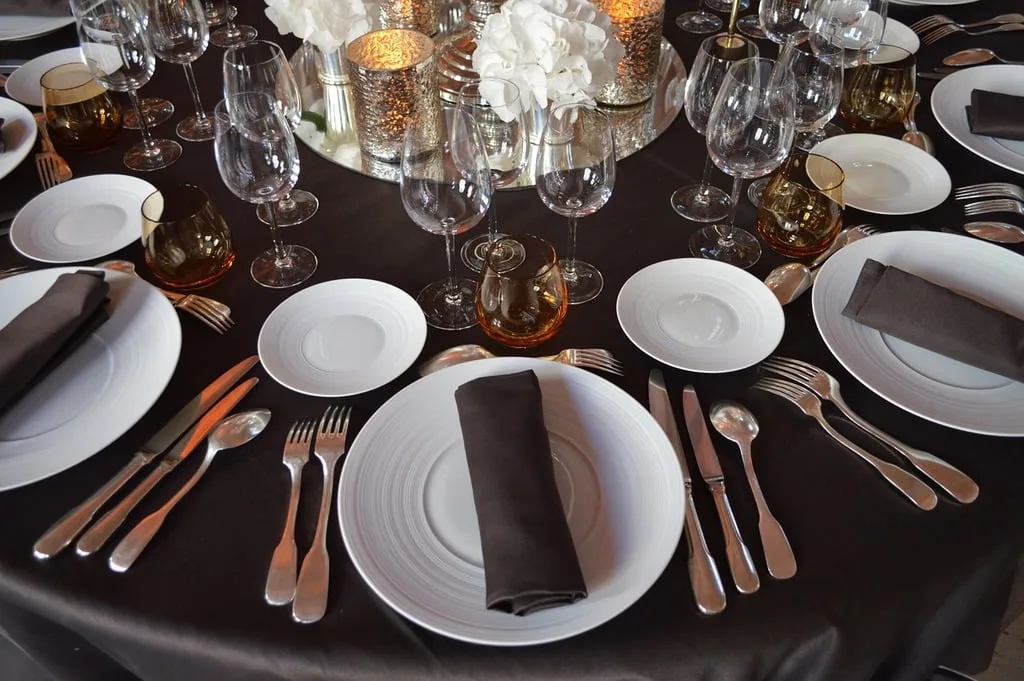Table of Contents Show
In the vibrant tapestry of Filipino lifestyle, hospitality reigns ideally suited. Rooted in the warmth of network and familial ties, Filipino gatherings are not simply occasions but expressions of affection, understanding, and camaraderie.
Central to these gatherings is the reception desk, where each detail, particularly the tableware, is pivotal in enhancing general enjoyment. This text explores the importance of tableware selection for Philippines reception tables, exploring its cultural, aesthetic, and practical dimensions.
Reception Desk
Filipino hospitality is legendary, frequently characterized by generous servings of delectable dishes and an environment of inclusivity. Tableware reception desk preference is deeply intertwined with this tradition, reflecting the values of admiration, abundance, and communal sharing.
From conventional gatherings, which consist of fiestas and circle of relatives celebrations, to modern occasions like weddings and organization functions, the selection of tableware is a mirrored photo of the ancient cultural past.
Traditional Filipino tableware frequently includes hand-made quantities from indigenous substances, including bamboo, rattan, and clay. These portions now not handiest display the United States’s wealthy artisanal ancient past but add a proper touch to the dining revel.
In modern years, there was a resurgence of interest in conventional Filipino craftsmanship, with artisans mixing age-vintage strategies with contemporary designs to create stylish and culturally resonant tableware.
Aesthetic Appeal and Atmosphere
The aesthetics of a reception table can set the tone for the entire occasion, evoking feelings and developing lasting impressions. Tableware preference plays an important role in shaping the visual enchantment of the table, with every piece contributing to the overall ecosystem and environment.
Tableware picks are no exception in the Philippines, where celebrations are frequently colourful and festive. Vibrant colourings, difficult patterns, and ornate designs are normally featured, such as a touch of caprice and flair to the eating revel.
Whether it’s far traditional Filipino motifs stimulated with the resource of nature and folklore or present-day designs that reflect global traits, the key is to strike a balance between splendour and accessibility, ensuring visitors feel welcomed and enchanted.
Practical Considerations and Functionality
While aesthetics are essential, practical issues must be considered even when choosing tableware for reception tables. Functionality, sturdiness, and ease of use are paramount, especially in massive gatherings with high overall performance.
In the Philippines, where communal dining is the norm, tableware ought to withstand heavy use and common handling. Materials such as porcelain, ceramic, and chrome steel are well-known alternatives for their durability and versatility.
Additionally, elements such as cleaning and storage have also to be considered to ensure that the eating experience is seamless and usable for both host and visitor.
Reception Table
In an increasingly reception table globalized world, cultural sensitivity and sustainability are becoming essential concerns in tableware selection. For Filipinos, this shows no longer the handiest honouring traditional craftsmanship and materials but embracing environmentally friendly practices.
Many Filipino artisans are turning to sustainable materials, such as bamboo, coconut shells, and recycled glass, to create environmentally friendly tableware that shows the U.S.’s dedication to maintaining its natural assets.
By selecting regionally sourced and ethically made merchandise, hosts can’t only manually close by groups; however, they can also lessen their carbon footprint and promote a more sustainable manner of living.
In the tapestry of Filipino hospitality, the reception table is a canvas upon which culture, aesthetics, and practicality converge. From conventional gatherings steeped in cultural ancient beyond to trendy occasions infused with current flair, the selection of tableware performs a pivotal role in shaping overall enjoyment.
By embracing the rich range of Filipino craftsmanship, incorporating colourful aesthetics, and prioritizing capability and sustainability, hosts can create reception tables that do not handiest pride the senses but honour the values of generosity, inclusivity, and appreciation that outline Filipino hospitality.
In doing so, they now not only enhance the eating revel but also rejoice in the spirit of community and camaraderie that lies at Filipino tradition’s coronary heart.










